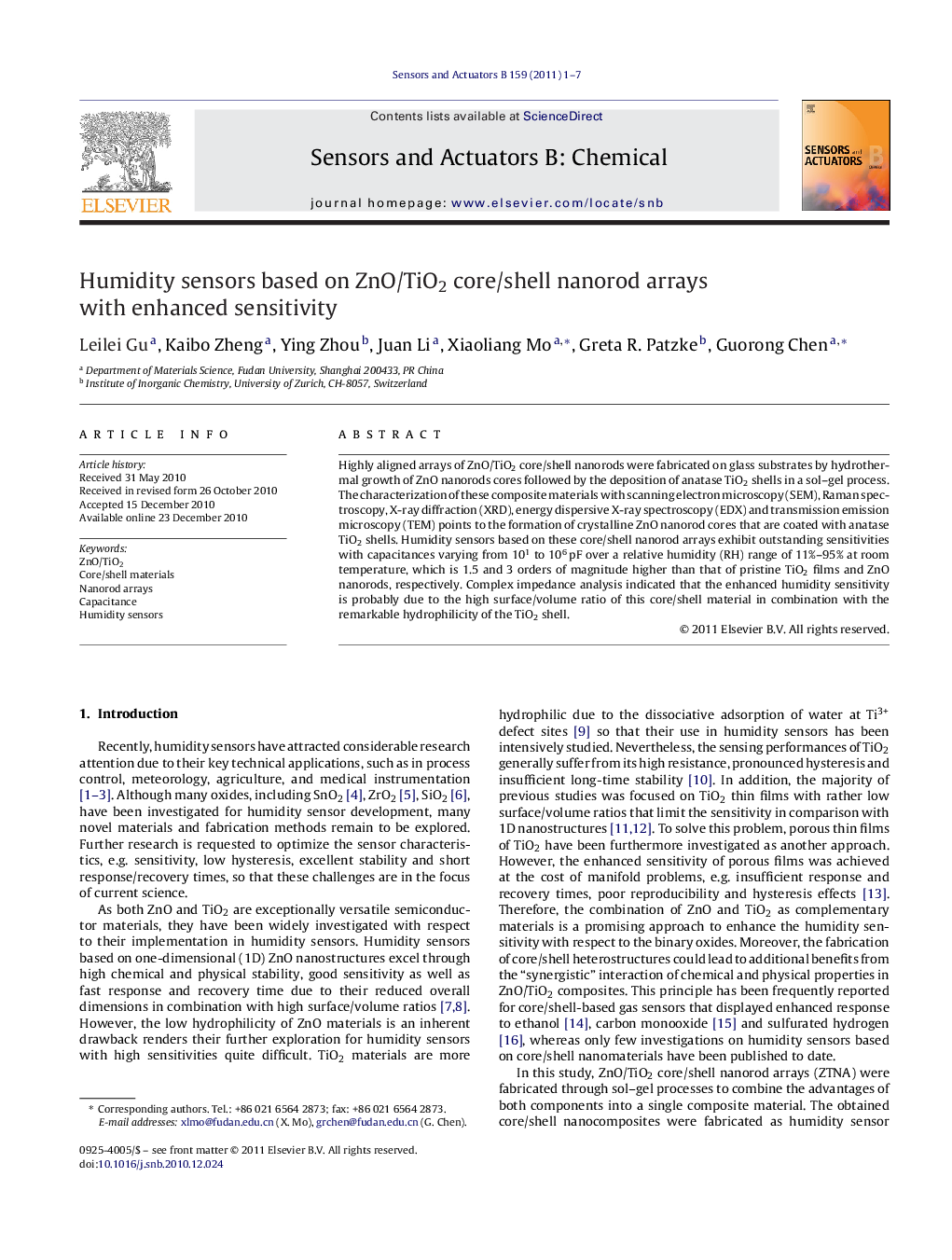| Article ID | Journal | Published Year | Pages | File Type |
|---|---|---|---|---|
| 750966 | Sensors and Actuators B: Chemical | 2011 | 7 Pages |
Highly aligned arrays of ZnO/TiO2 core/shell nanorods were fabricated on glass substrates by hydrothermal growth of ZnO nanorods cores followed by the deposition of anatase TiO2 shells in a sol–gel process. The characterization of these composite materials with scanning electron microscopy (SEM), Raman spectroscopy, X-ray diffraction (XRD), energy dispersive X-ray spectroscopy (EDX) and transmission emission microscopy (TEM) points to the formation of crystalline ZnO nanorod cores that are coated with anatase TiO2 shells. Humidity sensors based on these core/shell nanorod arrays exhibit outstanding sensitivities with capacitances varying from 101 to 106 pF over a relative humidity (RH) range of 11%–95% at room temperature, which is 1.5 and 3 orders of magnitude higher than that of pristine TiO2 films and ZnO nanorods, respectively. Complex impedance analysis indicated that the enhanced humidity sensitivity is probably due to the high surface/volume ratio of this core/shell material in combination with the remarkable hydrophilicity of the TiO2 shell.
